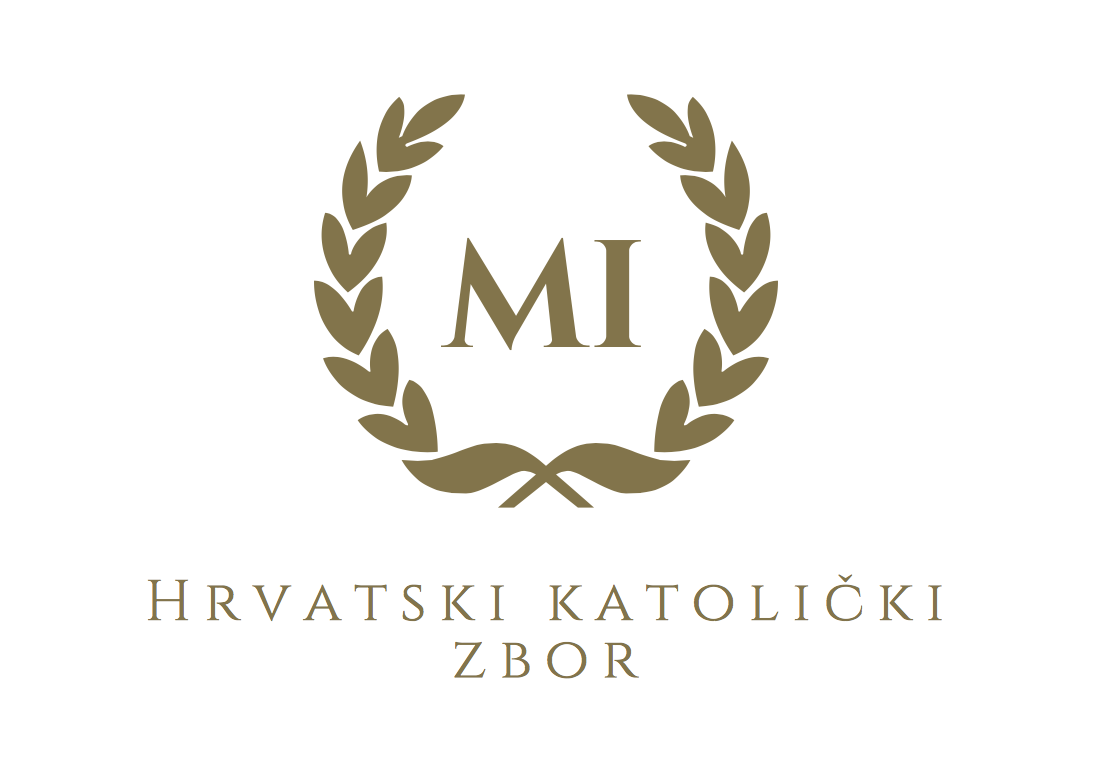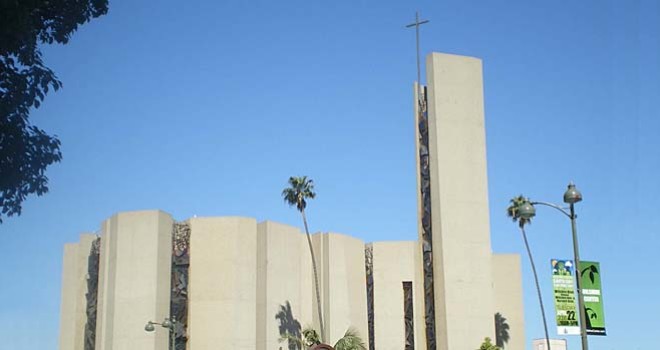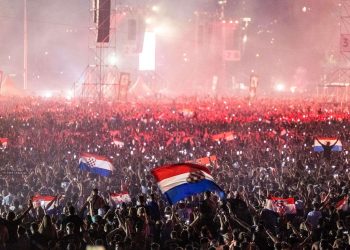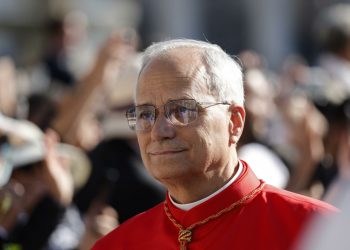TKO PLAĆA “RUŽNE” CRKVE I KOD NAS?
ARHITEKTONSKI STILOVI NEKIH CRKAVA UISTINU SU PROFANI
Nije ugodno o ovome pisati, ali evo otvaramo temu, pa ako želite komentirajte… Ilustracije su namjerno nepotpisane, jer takvih sličica ima jako mnogo. Tri su američke, a jedna naša domicilna. Nisu ciljano birane, jer izbor ružnih zdanja je preobilan. Svaka sličnost sa našom stvarnošću može biti namjerno istaknuta. Tko je odgovoran i tko plaća “ružne” crkve i kod nas?
Piše: Dan Burke – www.crisismagazine.com
Arhitektura govori te je kadra – poput homilije ili naviještanja Svetoga Pisma – duboko nas promijeniti. Ona nam propovijeda i poučava nas svaki puta kada uđemo u zgradu crkve. Kada govori istinu, podsjeća nas da je Bog u središtu, da smo slomljeni i potrebni Spasitelja koji nam nudi mjesto vječnoga jedinstva s Bogom. Otkriva nam kako se nalazimo na svetome tlu te nam se valja ponašati drugačije negoli prije no što smo ušli. Instinktivno nas obara na koljena, kako bismo se, u slavljenju, usredotočili na Njega. Govori nam da je Bog, u najvećem činu ljubavi poznatom čovjeku, dao svoj život za nas, poslavši nam svoga Sina kao žrtvu za naše grijehe.
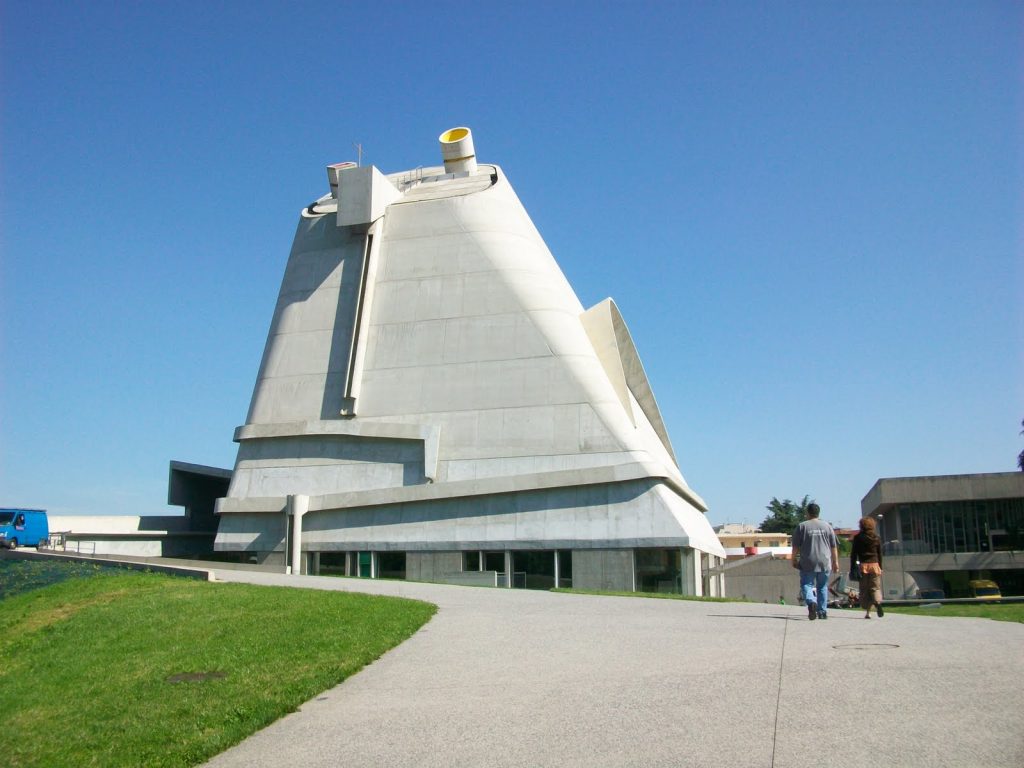 Kada god uđemo u prikladno projektiranu i urešenu crkvu, zamišljamo velika otajstva spasenja, o kojima često slušamo, sada ponuđena našim očima, te bismo tu vrstu propovijedanja mogli nazvati arhitektonskim pravovjerjem. Lijepa nam crkva ili predstavlja puninu istine liturgije, ili ne. Ili nas podsjeća na to da se sveta liturgija odvija u Nebeskom Jeruzalemu, u društvu ostalih pripadnika Mističnoga Tijela Kristova, ili ne. Ili nas ispunja željom da postanemo poput Boga i svetih, ili propušta veliku prigodu potaknuti našu volju na predanje Bogu. Bit crkvene arhitekture, stoga, nije tek u stilu, niti pak modi, niti subjektivnu ukusu, već u našemu istinskome susretu s Bogom. Za razliku od stručnjaka za unutarnje uređenje, koji ugodne boje bira iz posve estetskih razloga, uređenje crkve uključuje stvaranje od Boga nadahnute svete umjetnosti u cilju spasenja svijeta. Radi toga je Pavao VI. kazao kako je rad umjetnikâ uvelike nalik na onaj svećenika: služe se tvarima ovoga svijeta, kako bi nam donijeli Božju prisutnost.
Kada god uđemo u prikladno projektiranu i urešenu crkvu, zamišljamo velika otajstva spasenja, o kojima često slušamo, sada ponuđena našim očima, te bismo tu vrstu propovijedanja mogli nazvati arhitektonskim pravovjerjem. Lijepa nam crkva ili predstavlja puninu istine liturgije, ili ne. Ili nas podsjeća na to da se sveta liturgija odvija u Nebeskom Jeruzalemu, u društvu ostalih pripadnika Mističnoga Tijela Kristova, ili ne. Ili nas ispunja željom da postanemo poput Boga i svetih, ili propušta veliku prigodu potaknuti našu volju na predanje Bogu. Bit crkvene arhitekture, stoga, nije tek u stilu, niti pak modi, niti subjektivnu ukusu, već u našemu istinskome susretu s Bogom. Za razliku od stručnjaka za unutarnje uređenje, koji ugodne boje bira iz posve estetskih razloga, uređenje crkve uključuje stvaranje od Boga nadahnute svete umjetnosti u cilju spasenja svijeta. Radi toga je Pavao VI. kazao kako je rad umjetnikâ uvelike nalik na onaj svećenika: služe se tvarima ovoga svijeta, kako bi nam donijeli Božju prisutnost.
Potom, ima prigoda kada je vjerska poruka nijema — ili još i gore od toga. To se događa kada uđemo u crkvu za koju se ispostavi kako je više profana negoli sveta. Arhitekti i njihovi naručitelji iz redova Crkve ili su „zažmirili“ – kao dio bezbožne spletke namjerna potkopavanja vjere, ili jednostavno nisu upućeni u teologiju i sakramentalnost umjetnosti. Arhitektonski elementi u tim zgradama mogu „propovijedati“ primamljive poluistine, pa čak i laži: „Ti si ovdje najvažniji, a ne Bog, stoga uživaj u sebi i zaplješći si!” Ili: „Ovozemaljsko zajedništvo druženja istinska je narav liturgijskoga čina.” Prije nekoliko godina, posjetio sam župu koja je jasno oslikavala ovaj problem.
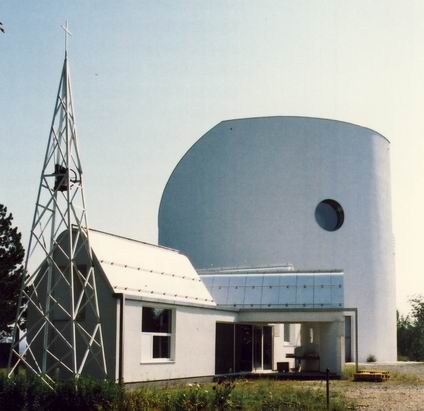 Kada sam ušao u tu arhitektonsku nakaradnost, smjesta me ispunio osjećaj pomutnje. Bilo je teško odlučiti gdje pokleknuti ili kako najbolje slijediti tijek Mise. U potpunosti je nedostajalo žarište, unatoč jasnih riječi Crkve u Obredu posvete crkve i oltara, kako je oltar simbol Krista. Božja je prisutnost bila zakrabuljena i ostavljena po strani. Mnoga su desetljeća liturgičari izražavali zabrinutost oko smještanja svetohraništva prvenstveno u zasebnu kapelu, u svrhu obavljanja privatne pobožnosti. Danas se valja upitati koji se motiv krije iza još veće ludosti: kada, ušavši u crkvu, ne možete dokučiti gdje se čuva Euharistija!
Kada sam ušao u tu arhitektonsku nakaradnost, smjesta me ispunio osjećaj pomutnje. Bilo je teško odlučiti gdje pokleknuti ili kako najbolje slijediti tijek Mise. U potpunosti je nedostajalo žarište, unatoč jasnih riječi Crkve u Obredu posvete crkve i oltara, kako je oltar simbol Krista. Božja je prisutnost bila zakrabuljena i ostavljena po strani. Mnoga su desetljeća liturgičari izražavali zabrinutost oko smještanja svetohraništva prvenstveno u zasebnu kapelu, u svrhu obavljanja privatne pobožnosti. Danas se valja upitati koji se motiv krije iza još veće ludosti: kada, ušavši u crkvu, ne možete dokučiti gdje se čuva Euharistija!
Jedan od osobito uznemirujućih elemenata nalazio se nad oltarom: činilo se kako se jedva raspoznatljivo ljudsko obličje nečim nalik na padobran kroz stakleni otvor spušta u nešto što je možda bio prostor svetišta.
Antropocentrični okrugli oblik crkve nije zapravo dopuštao smještanje raspela iznad ili iza oltara, pa je nekome „sinulo“ kako bi njegovo mjesto moglo zauzeti to teško raspoznatljivo tijelo od žičanoga okvira, bez smjera i cilja (kojemu ujedno nedostaje bilo kakav trag razapeća ili makar i jasnoga ljudskoga izraza lica). Svećenik i ministranti ušli su noseći samo neobičan križ od šarena stakla, bez korpusa, koji je upravo savršeno odražavao od Krista ispražnjenu bezličnost toga mjesta. Crkva, dakako, prepoznaje Kristovo žrtvovanje vlastitoga tijela, ali uz to časti i sâm križ, kako nam govori liturgija Velikoga petka: „Evo Križa na kojemu Spas je svijeta visio.” Razumije se i kako se katolici raduju Uskrsnuću, no istovremeno Kristov prinos samoga sebe Ocu smatraju trajnim činom, savršenim i neprestanim prinosom ljubavi. Zbog toga se Misa uvijek iznova može slaviti kao Kristova jedinstvena žrtva Ocu. Upravo radi toga, križ, a ne samo korpus, treba imati svoje mjesto u svakoj katoličkoj crkvi. Bez njega, ono što ostaje nije samo u vizualnom smislu bizarno, već ujedno i teološki manjkavo.
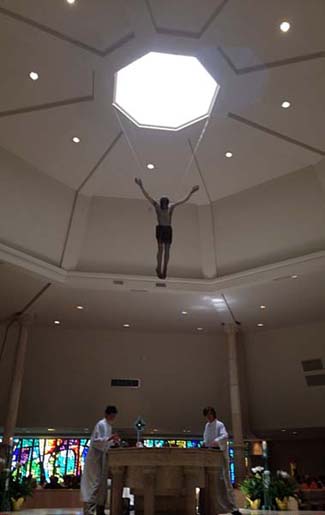 Osvrnuo sam se i uvjerio kako nema liturgijskoga raspela u onome što je trebao biti ili prostor svetišta, ili pak lađa. Jedino raspelo što sam ga uspio pronaći u toj prostoriji bio je sićušan, banalan prikaz postaja Križnoga puta (visok najviše kakvih pet centimetara). Postaje su bile male i toliko nejasne te bi ih bilo teško vratiti u ispravni redoslijed, kada biste ih slučajno pomješali i uklonili brojeve. Ova velika prigoda susreta sa središnim prizorima pashalnoga otajstva bila je umanjena, reducirana te — vjerojatno namjerno — skrivena. To nije nikakvo umjetničko djelo nove evangelizacije, već sramotna ne-evangelizacija, a moguće još i nešto gore od toga. Kasnije sam otkrio kako župa posjeduje starije tradicionalno raspelo smješteno u narteksu – pretpostavljam kako bi se umirilo župljane koju su već živjeli ondje kada je izgrađena nova crkva te nekim čudom zaista još uvijek vjeruju.
Osvrnuo sam se i uvjerio kako nema liturgijskoga raspela u onome što je trebao biti ili prostor svetišta, ili pak lađa. Jedino raspelo što sam ga uspio pronaći u toj prostoriji bio je sićušan, banalan prikaz postaja Križnoga puta (visok najviše kakvih pet centimetara). Postaje su bile male i toliko nejasne te bi ih bilo teško vratiti u ispravni redoslijed, kada biste ih slučajno pomješali i uklonili brojeve. Ova velika prigoda susreta sa središnim prizorima pashalnoga otajstva bila je umanjena, reducirana te — vjerojatno namjerno — skrivena. To nije nikakvo umjetničko djelo nove evangelizacije, već sramotna ne-evangelizacija, a moguće još i nešto gore od toga. Kasnije sam otkrio kako župa posjeduje starije tradicionalno raspelo smješteno u narteksu – pretpostavljam kako bi se umirilo župljane koju su već živjeli ondje kada je izgrađena nova crkva te nekim čudom zaista još uvijek vjeruju.
Sve je to bilo poprilično uznemirujuće, ali, još je strašnji bio način na koji su se ponijeli prema Svetohraništu: kao da bi Stvarna Prisutnost Isusa Krista bila neugodna, praznovjerna usputna pomisao koju valja sakriti ili minimalizirati, kako bi se župljani nesmetano mogli usredotočiti jedni na druge. U kutu, izvan prostora koji bi valjda trebao biti prostor svetišta, bijaše sagrađeno tako te je dopuštalo opuštano kretanje u svim smjerovima oko sebe, bez i najmanje skrbi oko Sina Božjega prisutnoga unutra (kao što je moguće vidjeti na ovoj duboko uznemirujućoj fotografiji).
U konačnici, prikrivenu bezbožnost ove arhitekture moguće je sažeti kako slijedi:
- nebeske stvarnosti i predivna obećanja vječnoga spasenja više nisu dostupni putem sakramentalne objave.
- Ne slavimo Boga zajedno s anđelima, svetima, i svime što je stvoreno.
- Isus zapravo nije trpio i umro za naše grijehe; nismo, zapravo, sigurni je li bio išta više od dobra čovjeka.
- Euharistija je tek ceremonijalno sjećanje na toga dobroga čovjeka. Ne valja pretjerivati oko njene važnosti.
- Ovdje je prisutan Bog, a On je ti. Sudjeluj u ceremoniji vlastitoga veličanja. Slobodno izbjegavaj molitvu, budi glasan, iskazuj prijateljstvo onima oko sebe te zaplješći ako ti se sviđa glazba.
Novi Zavjet spominje „nauk đavolski,” te nema dvojbe kako ova arhitektura propovijeda upravo taj nauk. Upravo sam mogao naslutiti osmijeh tih zloduha kako se raduju ovakvim profanim strukturama koje se grade da su crkve.
Kako bih vas ostavio s pozitivnom mišlju, preporučam vam fantastičnu knjigu Denisa McNamare, Catholic Church Architecture and the Spirit of the Liturgy /Arhitektura Katoličke Crkve i duh liturgije/. Nije jeftina, ali je vrijedna svoje cijene, kao sjajan vodič za one koji su odgovorni za obnovu župa i građevinske projekte u njima. Nadahnut će ujedno i sve one koji žele produbiti molitvu i pobožnost, susrećući se s arhitekturom koja govori Istinu: baš kao što je Sveto Pismo navještaj Evanđelja za uho, tako su liturgijska umjetnost i arhitektura navještaj Evanđelja za oko. Poput dobre homilje, želite da vam Evanđelje bude predstavljeno u svoj punini svoje ljepote i istinitosti. Sve drugo bilo bi oduzimanje njegove preobrazbene snage, čime se propušta prilika privođenja duša u topli Božji zagrljaj. (Za MIportal izabrao dr. fra Tomislav Pervan – Prijevod: A. Ch.)
*******
SEPTEMBER 25, 2018
Some Church Architectural Styles Really Are Profane

Architecture speaks, and, like a homily or proclamation of scripture, it can change us profoundly. It preaches and teaches every time we enter a church building. When it speaks truth it reminds us that God is central, and that we are broken and in need of a savior who offers us a place of eternal unity with God. It reveals to us that we are on hallowed ground and should act differently than we did before we entered. It instinctively draws us to our knees, to worship, and to focus on him. It tells us that God, in the greatest act of love ever known to man, has given his life for us by providing his son as a sacrifice for our sins.
 Whenever we enter into a properly designed and ornamented church, we imagine the great mysteries of salvation presented to the eye as they so often are to the ear, and this kind of preaching could be called architectural orthodoxy. A beautiful church either presents to us the full truth of the liturgy or it does not. It either reminds us that the sacred liturgy takes place in the Heavenly Jerusalem with the other members of the Mystical Body of Christ or it does not. It either fills us with desire to become like God and the saints, or it misses a great opportunity to move our wills to offer ourselves to God. Church architecture, then, is not simply about style, or fashion, or subjective taste but about our genuine encounter with God. Unlike an interior decorator picking pleasant colors for purely aesthetic purposes, church design involves the production of divinely inspired sacred art for the salvation of the world. For this reason, Paul VI said that the work of artists was very much like that of the priest: they use the matter of the world to render God present.
Whenever we enter into a properly designed and ornamented church, we imagine the great mysteries of salvation presented to the eye as they so often are to the ear, and this kind of preaching could be called architectural orthodoxy. A beautiful church either presents to us the full truth of the liturgy or it does not. It either reminds us that the sacred liturgy takes place in the Heavenly Jerusalem with the other members of the Mystical Body of Christ or it does not. It either fills us with desire to become like God and the saints, or it misses a great opportunity to move our wills to offer ourselves to God. Church architecture, then, is not simply about style, or fashion, or subjective taste but about our genuine encounter with God. Unlike an interior decorator picking pleasant colors for purely aesthetic purposes, church design involves the production of divinely inspired sacred art for the salvation of the world. For this reason, Paul VI said that the work of artists was very much like that of the priest: they use the matter of the world to render God present.
Then there are times when the religious message is mute—or worse. This happens when we enter a church that turns out to be more profane than sacred. The architects and their ecclesiastical clients were either asleep at the wheel, part of a nefarious plot to deliberately undermine the faith, or improperly trained in theology and the sacramentality of art. The architectural elements in these buildings can preach appealing half-truths or even lies: “You, not God, are the most important thing going on here, so enjoy yourself and applaud” or “The earthly community in fellowship is the true nature of liturgical action.” Several years ago I visited a parish that clearly illustrated this problem.
When I entered into this architectural charade, I was filled immediately with a sense of confusion. It was difficult to discern where to genuflect or how best to follow the flow of the Mass. It completely lacked a focal point, despite the Church’s clear assertion in the Rite of Dedication of a Church and Altar that the altar is a symbol of Christ. The presence of God was masked and hidden away. For many decades, liturgists raised concerns about the tabernacle being primarily located in a separate chapel for private devotion. Today, one has to ask what the motivation is behind an even greater travesty: making it hard to know where the Eucharist is reserved.
One of the more disturbing elements was on display above the altar, where a barely recognizable human form appeared to be parachuting down through a skylight into what might have been the sanctuary.
The anthropocentric Church-in-the-round design didn’t readily allow for a crucifix above or behind the altar, so someone came up with the idea of this directionless and indistinct wire-frame body (absent of any of the trauma of crucifixion or clear human expression). The priest and altar boys processed in with only an unusual stained-glass cross, without a corpus, that perfectly echoed the amorphous Christlessness of the place. While, naturally, the Church recognizes Christ’s sacrifice of his own body, it also venerates the cross itself, as the liturgy of Good Friday tells us: “Behold the wood of the Cross on which hung the salvation of the world.” While indeed Catholics rejoice in the Resurrection, they understand Christ’s offering of himself to the Father as an eternalact, a perfect and constant offering of love. For this reason, the Mass can be offered as the one sacrifice of Christ to the Father again and again. And for this reason, a cross, and not just a corpus, belongs in a Catholic church. Without it, the result is both visually bizarre and theologically deficient.
 I looked around and confirmed that there was no liturgical crucifix in what was supposed to be either the sanctuary or the nave. The only crucifix I could find in that room was in the form of a tiny, banal representation of one of the Stations of the Cross (about two or three inches high, at most). The stations were small and so devoid of clarity that if you mixed them up and removed the numerals, you would be hard-pressed to put them back together in order. This great opportunity to encounter the central acts of the Paschal Mystery was diminished, reduced, and—probably by intent—hidden. This is not the artwork of the New Evangelization, but rather ashamed non-evangelization, or worse. I later discovered that the parish did have an older traditional crucifix relegated to the narthex, I suppose to pacify the original parishioners who were still around when the new church was built and who probably actually believed in something.
I looked around and confirmed that there was no liturgical crucifix in what was supposed to be either the sanctuary or the nave. The only crucifix I could find in that room was in the form of a tiny, banal representation of one of the Stations of the Cross (about two or three inches high, at most). The stations were small and so devoid of clarity that if you mixed them up and removed the numerals, you would be hard-pressed to put them back together in order. This great opportunity to encounter the central acts of the Paschal Mystery was diminished, reduced, and—probably by intent—hidden. This is not the artwork of the New Evangelization, but rather ashamed non-evangelization, or worse. I later discovered that the parish did have an older traditional crucifix relegated to the narthex, I suppose to pacify the original parishioners who were still around when the new church was built and who probably actually believed in something.
All of this was troubling enough, but even more egregious was the treatment of the Tabernacle. It was as if the Real Presence of Jesus Christ were an embarrassing, superstitious afterthought that must be hidden or minimized to accommodate the focus of the parishioners on one another. Off to one side, outside of what might have been the sanctuary, it was constructed in such a way as to encourage all manner of dismissive lounging around without any concern for the Son of God present within (as illustrated in this deeply troubling photo).
In the end, the milquetoast heresy of this architecture can be summarized as follows:
- The heavenly realities and beautiful promises of eternal salvation are no longer accessible by sacramental revelation.
- We do not worship with the angels, the saints, and all of creation.
- Jesus didn’t really suffer and die for our sins; we’re not sure he was anything more than a good man.
- The Eucharist is merely a ceremonial memory of the good man. No need to exaggerate its importance.
- God is present here, and he is you. Take part in the ceremony of your magnificence. Feel free to avoid prayer, be loud and friendly, and applaud if you like the music.
The New Testament speaks of “doctrines of demons,” and there is no doubt that this architecture preaches those doctrines. I could sense the smile of those demons as they reveled in these profane structures that pretend to be churches.
In order to leave you with something positive, I recommend Denis McNamara’s fantastic book, Catholic Church Architecture and the Spirit of the Liturgy. Not cheap, but worth every penny, it is a brilliant guide for those responsible for parish restoration or building projects. And it will inspire all who want to deepen their prayer and devotion as they encounter architecture that speaks the Truth: just as Scripture is gospel for the ear, so liturgical art and architecture are the gospel for the eye. And just like a good homily, you want your gospel presented fully, beautifully, and truthfully. To do anything else is to rob it of its transformative power and miss a chance to lead souls to the warm embrace of God.
Editor’s note: The lead picture above is St. Basil Catholic Church in Los Angeles built in the modernist “Brutalist” style in 1968. This church is not the one mentioned in the article above. (Photo credit: Wikicommons)

